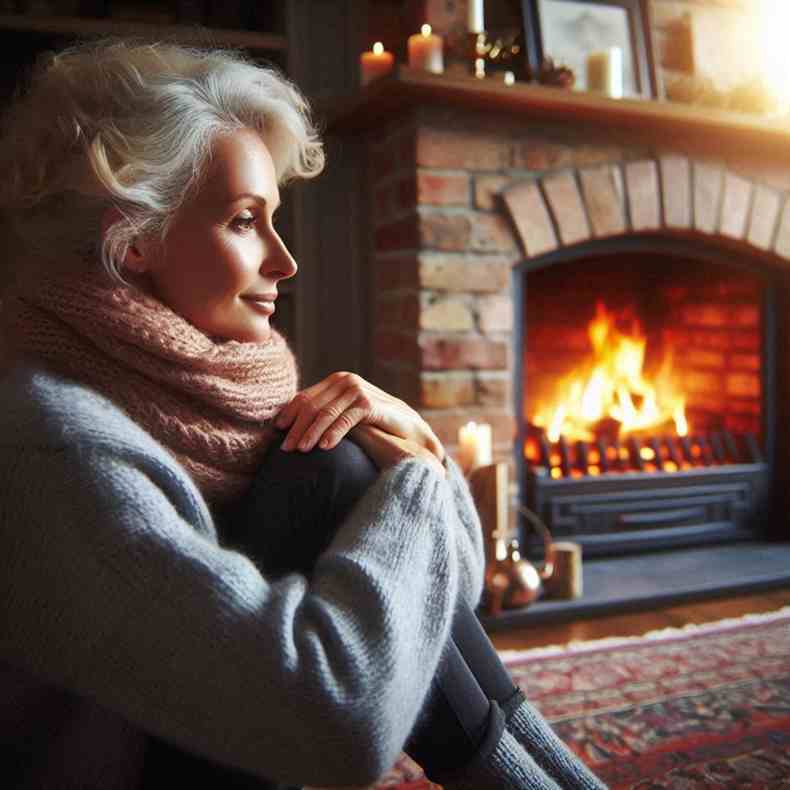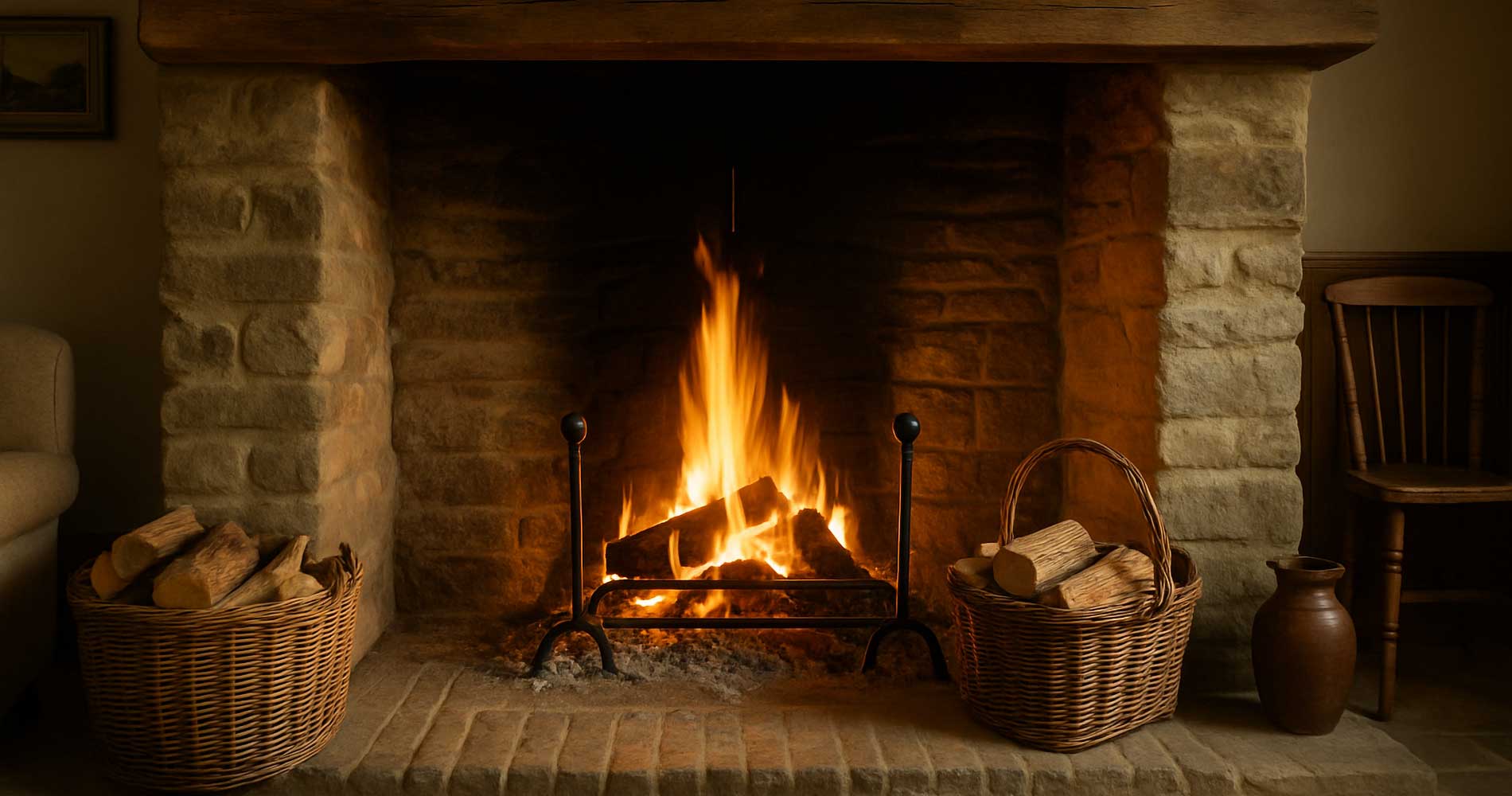From Survival Tool to Style Statement
It started with fire. Not the neat, button-press kind we have now, but wild, crackling flames that once kept ancient families alive. Back then, the fireplace wasn’t decorative — it was survival. Fast forward to today and your fireplace might light up via app, change colours on cue, or run silently on bioethanol. How did we get here? Well, like all good stories, this one’s a mix of history, heart, and a fair bit of human creativity.
Let’s take a warm stroll through the journey of fireplace design — and see how it’s gone from smoky centrepiece to stylish sanctuary-maker.
The Primitive Hearth: Fire at the Centre of Life
Imagine no walls, no heating system, no roast chicken unless you wrestled it yourself. Early hearths — basically pits or stone circles — were built smack in the middle of the room. That fire? It was life. Heat, food, light, and a sense of safety all rolled into one glowing pile of embers.
There were no chimneys (so yes, very smoky), and seating was, well, rocks and fur if you were lucky. But that hearth brought people together. Even then, it wasn’t just function. It was community.
Medieval Grandeur: Fireplaces Get Tall, Loud, and Impressive
By the medieval period, homes — particularly castles and manor houses — started to evolve. Fireplaces became vertical. Stone mantels, chimney flues, and proper hearths emerged. If you were wealthy, your fireplace was a showstopper, carved and massive, with a fire big enough to roast a boar or two.
- Chimneys made it possible to build multiple fireplaces on different floors
- Large stone surrounds reflected power and permanence
- The hearth remained a social hub — still warming, still gathering
This was where design first started to play. Your fireplace wasn’t just a heater — it was part of your story. Part of your standing. Part of your home’s heart.
Georgian and Victorian Refinement: A Fireplace for Every Room
By the 18th and 19th centuries, fireplace design exploded — in number and in nuance. Every room had one. Bedrooms, studies, parlours... even hallways. The industrial revolution made cast iron common, allowing for intricate inserts and tiled surrounds. Fireplaces went from brawny to beautiful.
- Cast iron inserts made heat more efficient and added decorative flair
- Ornamental mantels (especially in Victorian homes) allowed for photos, clocks, and all manner of sentimental knick-knacks
- Coal became the fuel of choice — cheaper, hotter, but far dirtier
There was elegance in every detail. But, let’s be honest, not a lot of breathing room — you’d have needed a good duster and a stronger set of lungs.
Mid-Century Functionality: Fire Meets Form (And Fashion)
Come the 1950s and 60s, the fireplace got a shake-up. Modernist architecture saw rooms open up, and fireplaces moved away from the wall — sometimes even into the centre of the room. Things got sleeker. Less fussy. Materials like concrete, metal and glass made their way in. The open hearth became more about ambience than necessity.
- Focus shifted from heat to style
- Freestanding stoves and space-age shapes became popular
- Televisions started competing as focal points — a turning point in layout and living
People weren’t huddled around the fire out of need anymore. They were choosing it. And that changed everything.
Electric Dreams and Gas Convenience: Low Fuss, High Function
By the late 20th century, gas and electric fireplaces became the norm. Push-button ignition replaced matches and kindling. For many, it was a game changer — especially in cities or flats where traditional hearths were impractical or forbidden.
These fireplaces were often boxed into existing chimneys, but soon manufacturers got more creative. Wall-mounted options, fake logs, glowing coals — they weren’t fooling anyone, but they did the job.
- Cleaner than wood-burning alternatives
- Lower maintenance and no ash to sweep (hurrah!)
- Not always pretty — early electric models lacked soul
Still, for those seeking heat without hassle, these units were a welcome compromise. A modern solution for modern life.
Now We’re Talking: The Rise of the Modern, Digital Fireplace
Today’s fireplaces are smart, stunning, and deeply personal. You can change the flame colour, adjust the heat with your phone, or sync it with your smart lighting. Some don’t even heat at all — they’re just there to make you feel better. And you know what? They do.
Fireplaces now exist for you — not for smoke, or roast dinners, or soot-stained chimney sweeps. They’re about mood. Atmosphere. Wellness.
- Electric and bioethanol units offer flame without fumes
- Smart control features allow scheduling, voice activation, and app connectivity
- Sustainable materials and clean fuel support eco-conscious living
And because there are so many styles — from minimalist glass boxes to retro-inspired stoves — it’s easier than ever to find something that doesn’t just fit your space, but fits you.

The Emotional Thread: Why Fireplaces Still Matter
Strip away the tech, the trends, the timber — and what are you left with? Stillness. Safety. Warmth. A place to gather, to pause, to breathe. That emotional connection to fire hasn’t changed in thousands of years. It’s instinctive.
So when we talk about fireplace design, we’re not just talking about architecture. We’re talking about connection. About what it means to create a space that invites you in, gently, without asking anything of you.
That matters. Especially when life gets loud. When winter feels endless. When your heart just needs somewhere soft to land.
What’s Next? Blending Tradition with Tech
Looking ahead, fireplaces will likely continue to blend design and software in beautiful ways. Think AI temperature control that adapts to your mood. Eco-smart materials that look as good as they feel. Possibly even virtual fireplaces that give off warmth — emotional, not just physical — for those in spaces too small for a flame.
The future of fireplace design isn’t cold or mechanical. It’s warm. Personal. Designed not just to decorate, but to care.
Final Thoughts — Full Circle, Still Flickering
From open hearths to digital displays, fireplaces have come full circle. They still offer what they always did — warmth, comfort, connection. But now, they do it in ways that work with modern life, not against it. They adapt to you. Your space. Your needs. Your story.
So whether you're lighting logs or tapping a touchscreen, know this — the glow is still real. The warmth is still meaningful. And the fire, in its many forms, still has a place in your home. And maybe, more importantly — in your heart.
